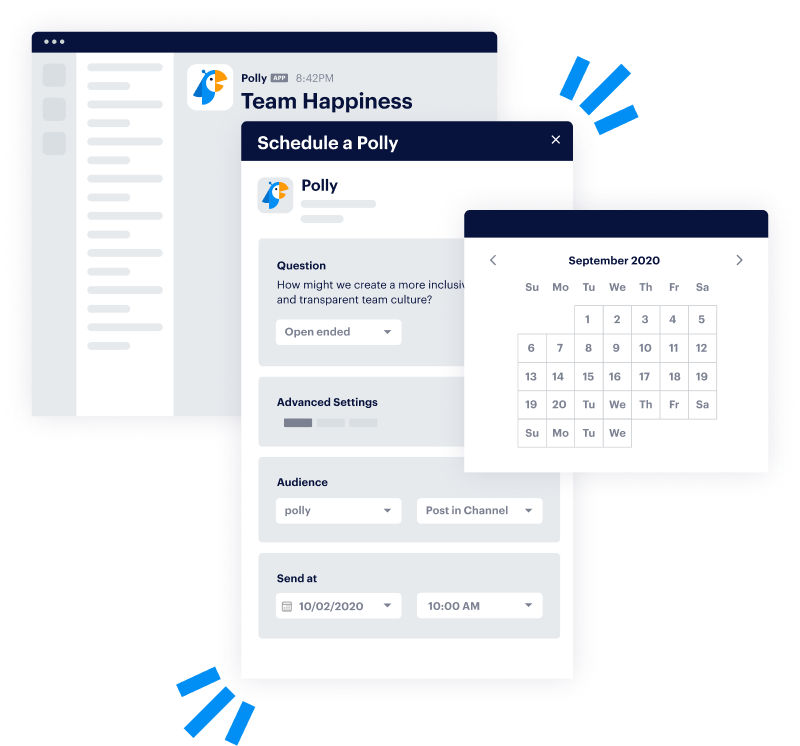We’ve all experienced the pain of micromanagement and managers that don’t want to delegate any responsibility or power at all. As an employee in that situation, it can feel like you have no control over your work day.
To combat this, more and more organizations are moving towards a culture of autonomy in the workplace. Instead of being told what to do by others, autonomous employees have more freedom over how they work, where they work, and when they work.
In this guide, we’ll explore:
- What autonomy in the workplace is
- The benefits of workplace autonomy
- How to encourage autonomy in your workplace
Let’s explore a better approach to managing employees’ time, productivity, and output. It’s time to start giving team members more control over the way they work, so we can all enjoy better results.
What do we mean by autonomy in the workplace?
Autonomy in the workplace refers to giving team members freedom when it comes to the way they work. It’s not about letting everyone write their own job description, but it is about delegating decision making, scheduling, and other aspects of the work experience.
Examples of autonomy in the workplace include:
- ❓ Empowering employees to make their own decisions
- 📆 Allowing employees to set their own schedules and workflows
- ✅ Encouraging team members to set their own goals and stay accountable
- 🌍 Offering remote work opportunities
- 🏫 Encouraging team members to pursue new skills and areas of interest
- 🏃 Letting team members customize their benefits packages
- 🤝 Trusting employees to do their best work in a way that suits them
- 🗳️ Welcoming feedback from everyone
You decide what workplace autonomy means to your organization. Start small by offering customizable benefits packages, or aim toward a work culture where everyone has total freedom over the way they work.
Why is autonomy in the workplace important?
 We all want to feel like we have the power to make decisions about our own daily lives. That feeling extends into the workplace too, which is why most employees view job autonomy as a must-have.
We all want to feel like we have the power to make decisions about our own daily lives. That feeling extends into the workplace too, which is why most employees view job autonomy as a must-have.
This isn’t just wishful thinking though — workplace autonomy actually delivers a whole range of benefits for everyone involved.
Giving employees autonomy in their job role and work environment can lead to benefits like:
- 📈 Higher levels of job satisfaction
- 💚 Increased employee morale, happiness, and well-being
- 💼 Higher levels of productivity
- 🔒 Stronger team relationships
- 🔗 Greater levels of employee retention
- 💡 More creative ideas and honest feedback
- 📣 Higher levels of employee engagement
- 😀 More rewarding employee experience
- 🏡 Better work/life balance
- 👏 Greater sense of pride in their own work and achievements
With benefits like these, there’s no reason not to give your team members more freedom when it comes to their work life — especially when you discover there are some easy yet impactful ways you can make it happen.
7 ways to encourage autonomy in your workplace
Workplace autonomy just makes sense, but how do you make it a reality? Here are some of the most effective ways you can encourage, promote, and celebrate autonomy in the workplace.
1. Define your approach to autonomous work
 Before you can encourage autonomy, you first need to decide what autonomy means to your organization. For some companies, it’s being able to choose your work schedule and location. For others, one of their company goals is the chance to influence decision making, learn new skill sets, and more.
Before you can encourage autonomy, you first need to decide what autonomy means to your organization. For some companies, it’s being able to choose your work schedule and location. For others, one of their company goals is the chance to influence decision making, learn new skill sets, and more.
Decide what your approach to workplace autonomy is and create a set of guidelines or principles. Provide guidance on which areas of the work environment your employees can customize, and offer examples on what this looks like. Promote your approach to autonomy in your onboarding process, so your new hires know what to expect right from the start.
2. Promote a culture of trust and transparency
Workplace autonomy thrives in a company culture where trust, transparency, and honesty are key principles. Build a culture that expects honesty and promotes openness, and you’ll soon find that people naturally start to work more autonomously.
Give your team members a voice by hosting Q&A sessions with the senior leadership team. Encourage people to be candid about work challenges, setbacks, and failures. Give your employees access to insights on how your company is performing, what other teams are working on, and what your future plans are.
3. Open up communication channels
 Part of workplace autonomy is being able to choose where and when you communicate with others. To make this happen, you need a variety of ways that your team members can connect with each other.
Part of workplace autonomy is being able to choose where and when you communicate with others. To make this happen, you need a variety of ways that your team members can connect with each other.
Invest in internal communications tools that match your goals. Set up Slack channels where people can connect over shared ideas and interests. Use Polly to set up a Suggestion Box with a linked public channel, so everyone has full transparency over your responses. Host video calls with specific purposes like brainstorming sessions, problem-solving sessions, or Zoom icebreakers to help others get to know each other.
4. Encourage a culture of learning
In an autonomous work environment, employees should have access to opportunities for skill development and learning. Promoting life-long learning doesn’t just give your employees access to new skills. It can also help you spot those with special talents or leadership qualities, so you can reward them with more opportunities to grow.
Give your team members access to online learning platforms, host “lunch and learn” sessions where they can learn a new skill from another team member, and offer stipends for continuous education.
5. Set up systems for feedback
 Feedback is at the heart of any strong company culture. In order for your team members to enjoy autonomy, they should be able to share ideas, make suggestions, and challenge what they feel is wrong. Promote idea sharing and make it easier by introducing a culture of feedback and building systems that support it.
Feedback is at the heart of any strong company culture. In order for your team members to enjoy autonomy, they should be able to share ideas, make suggestions, and challenge what they feel is wrong. Promote idea sharing and make it easier by introducing a culture of feedback and building systems that support it.
Polly makes this super easy. We have a range of features that make employee feedback a seamless part of your employee experience. Run employee engagement surveys, send regular check-ins with our Weekly Team Check-In template, and invite people to get involved with our Meeting Prep template.
This isn’t just something we encourage, but it’s something we actually do. Learn more about how Polly has created systems of continuous feedback and what the impact has been.
6. Make it easy to set and track goals
Empowerment plays a big role in workplace autonomy, and a great way to make that easy is to encourage your team members to set their own goals. Simplify this process and promote it by creating the right environment and offering the right tools.
Invest in software that allows your team members to set, customize, and track their own goals and to-do lists. Encourage them to use this to stay motivated, or come up with a way to gamify the experience and reward everyone for achieving their goals.
7. Celebrate achievements
Autonomy helps raise employee motivation and morale, but that doesn’t mean you can’t use other initiatives to make that impact even bigger. Celebrate your team members’ impressive ideas, thoughtfulness, and other achievements and characteristics to boost engagement and happiness.
Come up with a list of staff awards your team members will actually want to win, and invite nominations. Host a monthly, quarterly, or annual employee awards ceremony online and offer thoughtful celebration awards for good work. Make this part of your team meetings too, with space on the agenda to celebrate good news and hard work.
Promote autonomy in the workplace with Polly
Empower your team members to take control of the way they work, and end up with not only happier employees but a positive impact on the entire organization. Use these ideas to help you plan your own workplace autonomy changes and make them a reality.
As you consider all the ways you can encourage freedom in the workplace, bring Polly aboard as your co-pilot. Our feedback and coaching features give you a fresh way to engage with your team members, encourage feedback, and promote opportunities for autonomy.

Written by Nicola Scoon
Nicola Scoon is a freelance writer that's passionate about employee engagement and better workplace experiences. She draws on her experience in internal communications to help companies create content that empowers, encourages, and motivates people to create better experiences for all.







